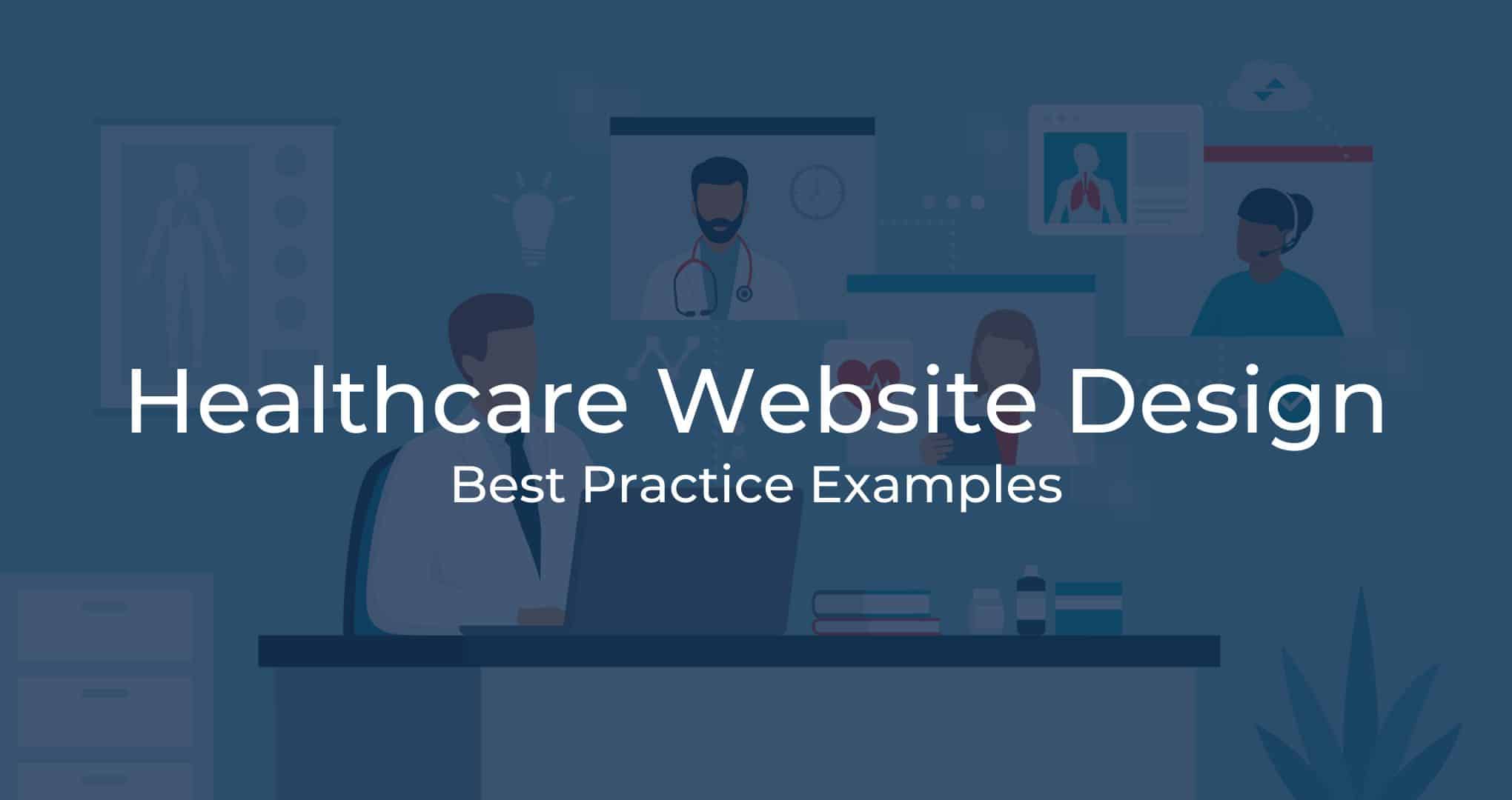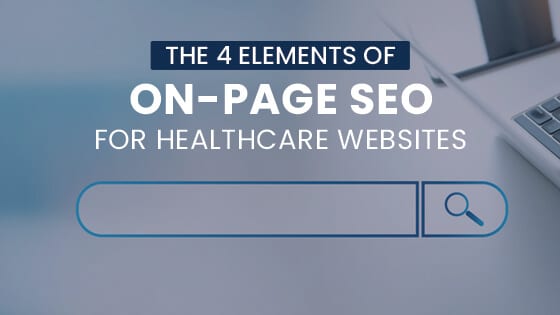Over 20 Years of Experience in

As a medical practice, you know that quality patient care starts with expertise and precision. The same approach should be applied when choosing website designers for your medical practice's online presence.Your website is a vital marketing tool and the first impression patients have of your practice.
Our team combines extensive medical website design expertise with years of experience specifically marketing healthcare services. We create customized websites for medical practices that go beyond templates to effectively communicate your services, experience and specialties. From compelling content to clear calls-to-action, we optimize your site to generate more qualified leads.
With a portfolio of over 3,000 medical websites delivered, Glacial Multimedia understands the nuances and best practices for a successful medical website design.
Discover the difference professional medical website design can make!

Browse by Specialty
From ophthalmology and orthopedics to ENT, dentistry and men's health, our portfolio is the perfect place to see the results that can be achieved for your business. Explore our medical website portfolio and see the creativity and skill of our team in action. Starting at the ground level with branding to digital experiences all the way through to launching a finalized website and marketing campaign, we've got a diverse range of projects that will inspire you.
Whether you are building your practice's first website, redesigning an old website, or just looking for a fresh look, Glacial Multimedia is the top choice. We've designed and developed over 3,000 unique websites, working with physicians and practices across all medical verticals.
We know what will work using tried and true methods. Combine this with our stellar digital marketing services and it becomes clear that using Glacial will lead to your best ROI.
There's a lot that goes into having the best website possible for reconstructive and cosmetic surgery providers. You need to include engagement objects, high-quality content that patients understand, and design that works on every possible platform. These are only a few of the many ways to ensure you have the best possible medical website design.
It takes a tried and true combination of website design and digital marketing services to see the results you want, but our plastic surgery marketing services ensure that your website runs efficiently and helps you increase leads with potential patients.
Does your website look good?
Having a world-class medical website design is crucial for your practice. As more first time interactions move online, a well-designed website can help establish trust and credibility, educate customers, and lead to increased conversions with more prospective patients choosing you. By partnering with Glacial, you are working with the best website design services available, ensuring that your business stays ahead of the competition and continues to grow. Investing in a top-notch website design is an investment in the long-term success of your healthcare practice.
Does your website stand out from the competition?
The way that your website looks and feels is all about your practice's branding and design. Branding is an integral part of any successful website design.
Good branding means designing something that stands out from a sea of competitors. For your new website, it means creating a functional design that's not only beautiful, but functional and one of a kind.
Are you capturing high intent leads?
Brand awareness and being seen when a high intent lead is looking for your services is a key driver of additional revenue and patient volume.
A fundamental part of why PPC is so successful for so many doctors is our use of landing pages and optimizing for conversions. Landing pages involve creating a custom page for use in paid search and social media advertising campaigns.
These landing pages keep potential patients from getting distracted on other pages of your website and are very deliberately designed to increase conversions (in this case, form fills). These targeted pages usually include an engagement object, usually in the form of a self-test, to keep the user's attention before capturing their contact information in a quick and concise way.
Can patients find your website online?
What's the point of having an award winning website design if it's not going to be found in search engines? SEO (known as search engine optimization) uses on-page, off-page, and Local SEO tactics to help increase rankings and ensure you are at the top of search results.
On-page optimization for a physician’s website refers to making sure the technical aspects of your website are in order, and optimizing the content and meta data around the patient search queries related to the services and geographic area your business serves.
Local SEO is another crucial component, are the directory citations and business profiles in map results on search engines. Winning in the map pack is one of the top ways a local area medical provider can drive traffic and increase patient bookings.
Are you providing helpful information?
At its core, content marketing is about creating content, though the focus is typically on web copy and blogs. Content should be educational and informational and something that patients can understand, no matter what level of schooling they've completed.
FAQ style content is the easiest way to achieve this, with the goal being content that answers questions like: Am I a candidate for X surgery? How much does Y procedure cost? What is the difference between A and B service? Within the content, these questions, at the very minimum should be answered in full to avoid patients feeling like they've been duped or taken advantage of in any way.
Besides creating website copy, blogs are another excellent way to support your website. Blogs are not only a great way to answer questions, but they are also a fantastic way to consistently add high-quality content to your website.
This is the kind of activity that Google takes notice of. If your practice is consistently creating high-quality content in the form of blogs, it can help with rankings.
It can also help these blogs posts potentially rank on their own if they are answering something that Google considers to be highly authoritative. The more authoritative content a website produces, the more authoritative that practice starts to look to Google over time.
Are patients interacting with your website?
Do you want a website that outperforms the competition? One way to stand out is by creating a website that features educational engagement objects for your patients.
Engagement objects are things like self-tests or symptom simulators that invite visitors to interact with your website and learn in the process. Self evaluation tests both educate users, and act as a funnel to collect information about the potential patient so practices can contact them and begin their consultation process.
Other important engagement objects your website should have include CTAs like online scheduling and click to call. Engaging with a practice should always be as easy as possible, whether the user is on mobile or desktop. Concise call to actions make it simple for a patient to reach out to the practice the moment they decide to. Medical websites also benefit from videos that show a more personal side of a practice and email collection to bolster existing email marketing efforts.
Do you show testimonials on your website?
Social proof is a powerful force when it comes to attracting new patients. Many patients determine a first impression of your practice before they even set foot in the door, so collecting and displaying reviews has never been more important.
Software for online reputation management and review response has become a valuable tool, and nearly all reconstructive cosmetic surgery practices now use it both on their websites and in their overall digital marketing strategy.
Can a patient book an appointment on your website?
Once your practice has potential new leads, do you have a way to collect lead information? With tools like MDprospects and Appointec it's never been easier. Patients want the ability to schedule appointments on their time, and with real-time appointment scheduling, you can reduce the chance of double booking.
MDprospects gives you the option to schedule directly through a simple-to-use form that feeds into your database of leads. MDprospects also gives you the greatest control over leads from consult to surgery, allowing you to continue keeping your leads warm and eventually turn them into patients.
Appointec takes scheduling one step further by offering an easy and convenient way for patients to schedule appointments. Appointec integrates with your practice management system, allowing your patients to see real-time appointment availability and the convenience of booking appointments when it's most convenient for them.

Excellent quality work! Their team is professional and highly patient throughout the process. I highly recommend Glacial! 5 Stars!
- Robert F. Melendez, MD, Juliette Eye Institute
Don't settle for a second-rate website design. Your website is your clinic's digital front door. Invest in a custom design that will set you apart and give you the competitive edge you need to grow your business. Contact us today to schedule a consultation and take the first step in achieving the online results that you want.
Call Us Today!Related Articles







Schedule Your Free Medical Marketing Assessment Today!
Use Personas to Attract Your Ideal Patients
Download Our Free Workbook to Learn How!